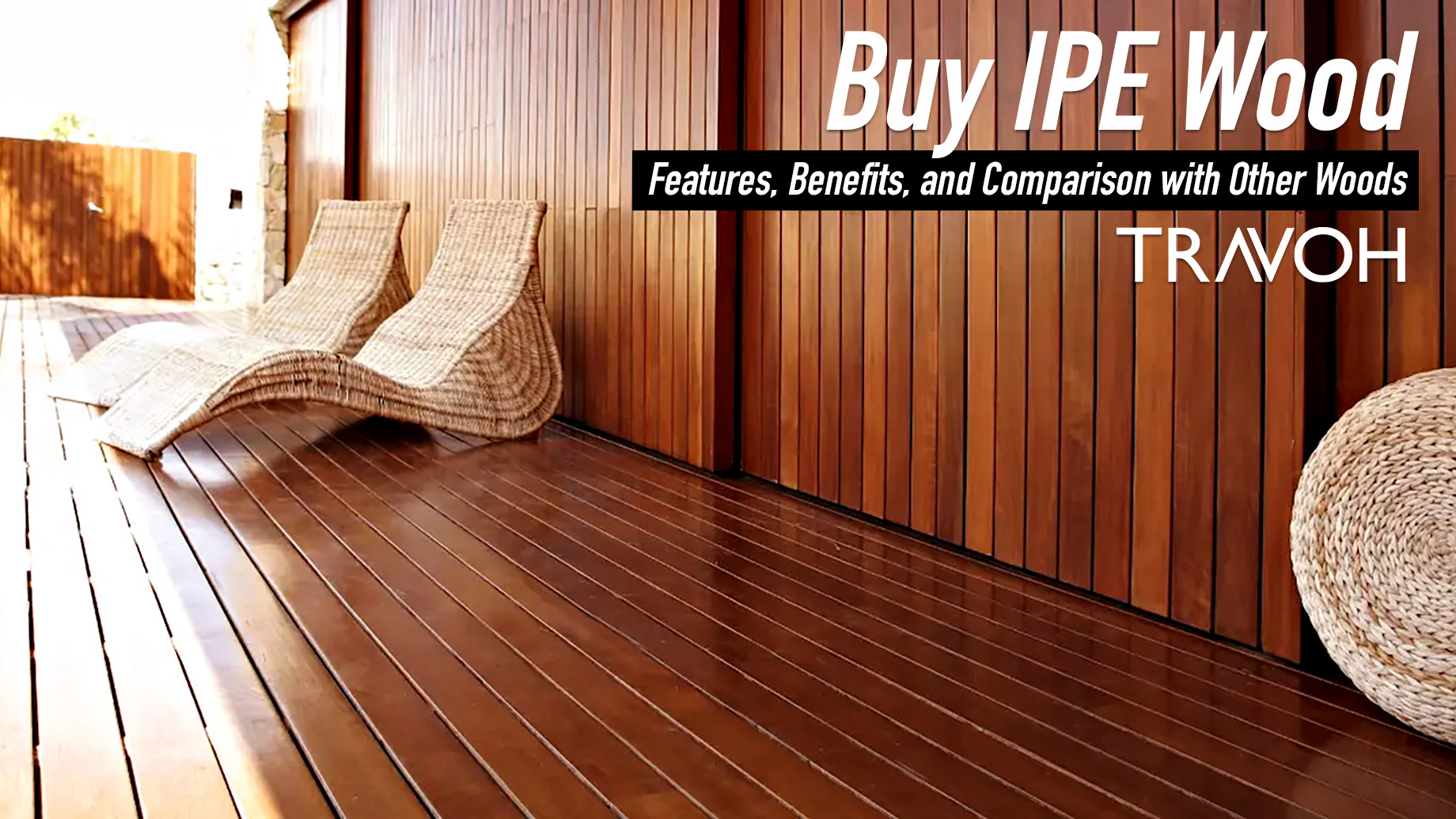
Why Choose IPE Wood for Your Project?
IPE wood is a popular choice for outdoor projects, including decking, fences, and furniture. Its durability, resistance to weather, and stunning appearance make it stand out among other wood types. If you’re planning a project and looking to buy IPE wood, understanding its features and how it compares to other types of wood is essential.
What is IPE Wood?
IPE wood, also known as Brazilian walnut, is native to Central and South America. It’s famous for its impressive hardness, density, and natural resistance to insects, rot, and moisture. This makes it ideal for outdoor use, ensuring long-lasting performance in different climates.
Key Features of IPE Wood
- Durability: IPE wood is one of the hardest woods available, with a Janka hardness rating of 3,680 lb. This makes it highly resistant to scratches, dents, and wear.
- Weather Resistance: Thanks to its dense structure, IPE wood naturally resists moisture, rot, and even mold, making it perfect for areas with high humidity or fluctuating temperatures.
- Longevity: When properly maintained, IPE wood can last up to 50 years, making it a highly sustainable option for long-term projects.
- Insect Resistance: IPE naturally repels termites and other wood-eating insects without the need for chemical treatments.
- Beautiful Appearance: IPE wood boasts rich, deep brown tones with fine grains, adding a luxurious feel to any outdoor space.
Comparing IPE Wood to Other Wood Types
IPE Wood vs. Cedar
Cedar is often used for outdoor projects because of its natural resistance to decay and pests. However, when compared to IPE wood, cedar falls short in terms of hardness and longevity. Cedar is softer, which means it is more susceptible to scratches and dents. While it’s a good choice for smaller, more budget-friendly projects, IPE wood is far superior in durability.
IPE Wood vs. Redwood
Redwood is another popular choice for outdoor applications, known for its beautiful reddish hue and natural weather resistance. However, redwood is not as dense or hard as IPE wood. While redwood can last for many years, it still requires regular maintenance, such as staining and sealing, to keep up its appearance. In comparison, IPE wood’s natural durability reduces the need for frequent upkeep.
IPE Wood vs. Teak
Teak is often regarded as the gold standard for outdoor furniture and decking due to its resistance to water and pests. IPE wood, however, rivals teak in durability and weather resistance, while often being more affordable. Teak also requires more regular maintenance to preserve its color and prevent silvering over time, whereas IPE wood retains its appearance with minimal care.
Why Buy IPE Wood?
- Excellent durability for high-traffic areas.
- Natural resistance to moisture and insects, reducing the need for chemical treatments.
- Rich and attractive appearance, making it ideal for aesthetic outdoor projects.
- Long-lasting and sustainable, reducing the need for frequent replacements.
- Lower maintenance compared to other hardwoods like teak.
If you want a wood that offers unmatched performance, wood IPE https://lumberpoint.com/prodtag/ipe-wood/ is an excellent investment for your project. Not only does it provide a strong and durable material, but it also adds a luxurious touch to any space. Whether you’re building a deck, creating outdoor furniture, or constructing a fence, IPE wood will ensure your project lasts for decades.
Conclusion: Buy IPE Wood for Your Next Project
In summary, IPE wood outperforms many other wood types in durability, weather resistance, and longevity. If you’re planning a project that requires wood that can withstand the elements and last for decades, buying IPE wood is the best choice. Its natural beauty, strength, and minimal maintenance needs make it a top option for outdoor applications. Don’t hesitate to invest in IPE wood for your next project – it will prove to be worth every penny.
